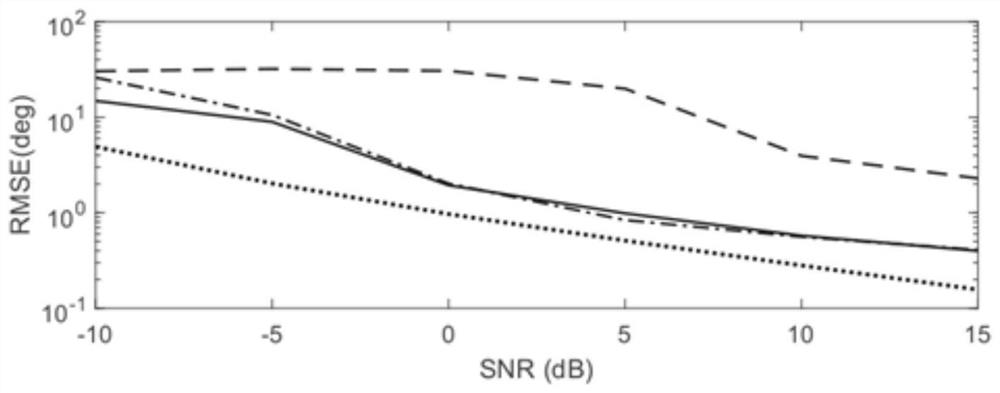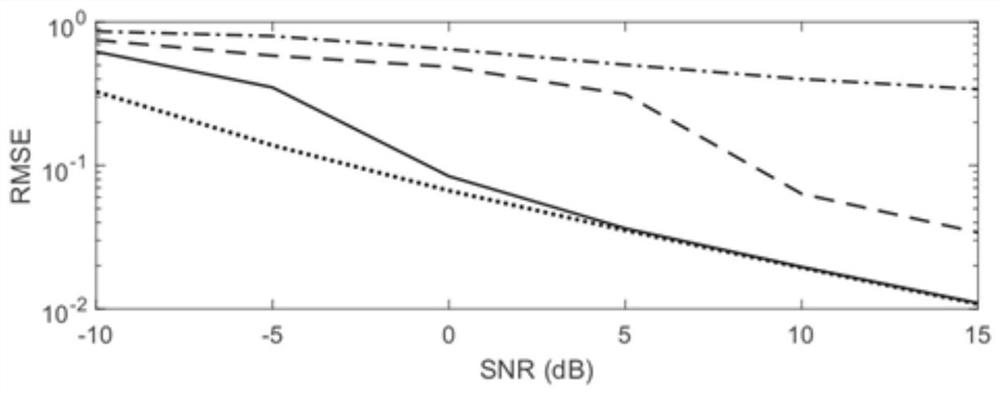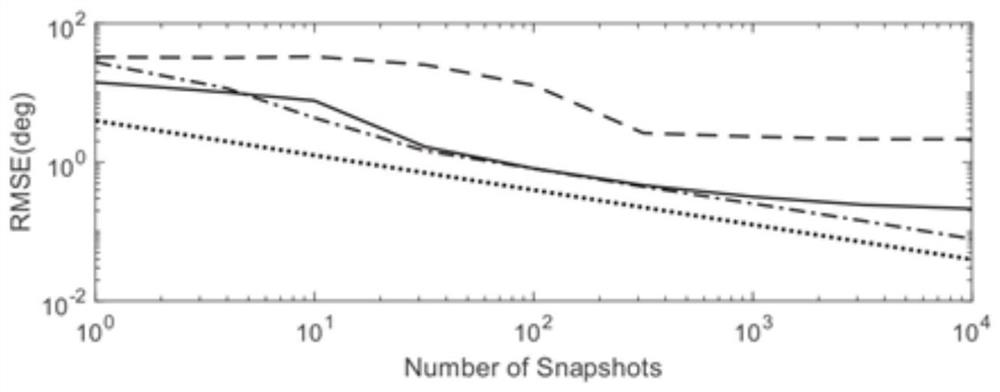Near-field signal source positioning method without gridding based on sparse reconstruction
A technology of sparse reconstruction and positioning method, which is applied in positioning, radio wave measurement system, measurement device, etc.
- Summary
- Abstract
- Description
- Claims
- Application Information
AI Technical Summary
Problems solved by technology
Method used
Image
Examples
Embodiment Construction
[0064] The present invention will be described in detail below in conjunction with the accompanying drawings and embodiments.
[0065] In the present invention, for any variable a, a represents a theoretical value, Indicates the actual calculated value of variable a, Indicates an estimate of the variable a that is closer to the theoretical value.
[0066] Extract the anti-diagonal elements of the signal covariance matrix, construct a correlation matrix similar to the Toeplitz matrix, establish a convex optimization problem for the reconstruction of the correlation matrix, and obtain a correlation matrix closer to the theoretical value based on the restored positive semi-definite programming estimation. The Prony method estimates the direction of arrival of the near-field signal source. When the direction of arrival is known, the distance between the signal source and the symmetric uniform linear array can be effectively estimated by using the conventional subspace-based met...
PUM
 Login to View More
Login to View More Abstract
Description
Claims
Application Information
 Login to View More
Login to View More - R&D Engineer
- R&D Manager
- IP Professional
- Industry Leading Data Capabilities
- Powerful AI technology
- Patent DNA Extraction
Browse by: Latest US Patents, China's latest patents, Technical Efficacy Thesaurus, Application Domain, Technology Topic, Popular Technical Reports.
© 2024 PatSnap. All rights reserved.Legal|Privacy policy|Modern Slavery Act Transparency Statement|Sitemap|About US| Contact US: help@patsnap.com










